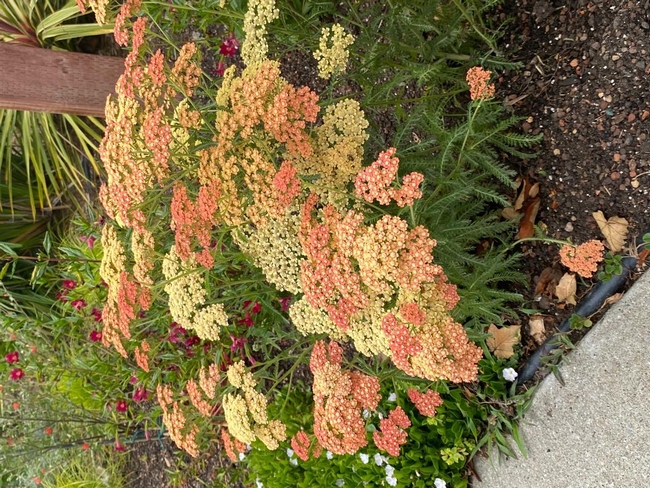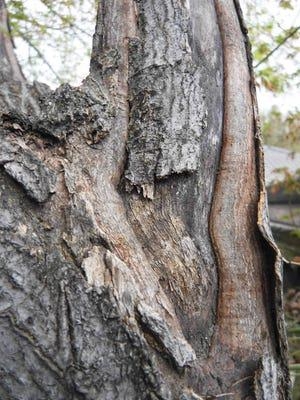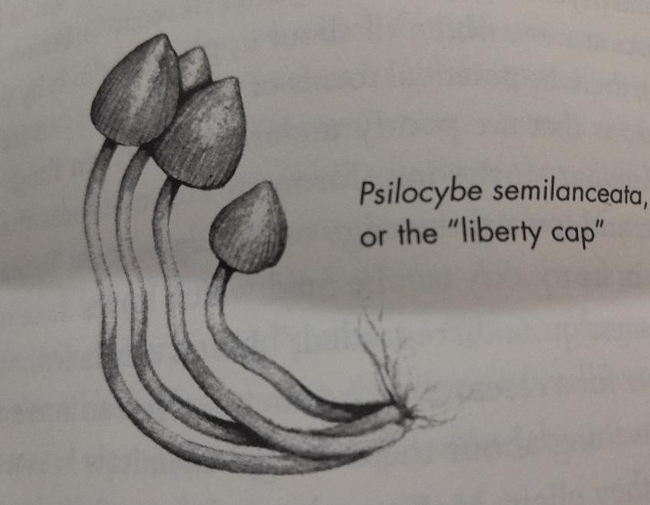
Five years ago, we said goodbye to our country home, a place I cherished deeply. For 20 years, my husband and I poured our hearts into transforming an overgrown mess of weeds and old Tokay grape vines into beautiful gardens. But as the years passed, keeping up with it became harder, especially in the summer heat and with physical limitations. So, we made the tough choice to sell and move to a milder climate we loved visiting.
Three and a half years later, we returned to the Central Valley, opting for a smaller, more manageable home and yards. In January 2023, we found a house that needed total renovation, inside and out. While renovating indoors, we took time to observe the sun exposure throughout each season, microclimates, drainage issues, and soil in the front and back yards.
After a year of observing and planning, we were ready to start the landscape project. The front landscape was completed in March, and I am ready to share our journey—the what and why of our choices and the process of the project.
The Front Yard Landscape Journey Begins
Identifying The Existing Front Landscape and Exterior Issues
The front yard, facing south, was a sight to behold for all the wrong reasons. Overgrown foundation shrubs, and a lawn overrun by Bermudagrass, bindweed, dandelions, and a myriad of other weeds. Adding to the woes, the sidewalk to the porch had settled in one spot, forming a troublesome low area that would collect water whenever it rained or the sprinklers did their job. The rain gutters were long overdue for replacement, and a fresh coat of exterior paint was desperately needed. Additionally, the tile on the front porch was a hazard when wet, requiring immediate replacement. Maneuvering around parked vehicles in the narrow driveway made accessing the sidewalk leading to the porch a cumbersome task.
Our Observations and the Plan Develops
With a commitment to water conservation in mind, we decided to forgo having a traditional lawn in our new front-yard landscape. Instead, we aimed to incorporate our surroundings with a selected color palette, captivating textures, fragrance, and dynamic movement through carefully selected plants. To bring these ideas to fruition, I methodically crafted a list of preferred plants and sketched out concepts for a revamped layout, envisioning a new sidewalk, a wider driveway, and the addition of a cozy sitting area.
Unlike our previous endeavor on our country property, which we tackled ourselves 25 years ago, we made the deliberate choice to enlist the expertise of a landscape contractor this time around. Additionally, recognizing the value of professional insight, we engaged the services of a landscape architect to translate my ideas into a detailed plan that the contractor could then execute, ensuring that my vision would be realized with precision and expertise.
Essential Preparations Before Embarking on the Project
Prior to engaging a landscape architect, several key tasks demanded our attention. First and foremost, we needed to address the urgent matters of replacing the gutters, refreshing the exterior paint, re-tiling the front porch and eradicating the Bermudagrass. These were crucial prerequisites to be completed before diving into the landscaping project. With these items satisfactorily checked off our list, I could then shift my focus to the exciting task of selecting the perfect plants for our new landscape design.
Inspired by the All Stars—Selecting the Plants
Some years back, I volunteered time tending to the "All Star" garden, nestled within the gardens at the Robert Cabral Agricultural Center in Stockton. This experience sparked a deep appreciation for the diverse array of plants showcased there, particularly those designated as UC Davis Arboretum All Stars. Eager to enhance my own yard with the beauty and resilience of these plants, I set out to incorporate as many as possible into my landscape design.
For those who haven't had the pleasure of exploring the gardens at the Robert Cabral Agricultural Center, I highly recommend taking a leisurely stroll through its various demonstration gardens. Open every day year-round, it offers a delightful escape and serves as a treasure trove of inspiration for garden enthusiasts. The "All Stars" selection consists of plants handpicked for their adaptability and thriving nature in Yolo, Sacramento, and San Joaquin Counties.
For those interested in discovering these remarkable plants firsthand, I encourage you to visit the UC Davis Arboretum and the All Stars webpage for more information and inspiration. It's a valuable resource for anyone seeking to elevate their garden with resilient and beautiful flora. The first article in this newsletter includes fascinating information on the All-Stars.
I aimed for a serene ambiance in my yard, envisioning a cool color palette dominated by shades of white, purple, blue, and pink. It was important that there would be fragrance and blooms to admire and attract pollinators throughout the year. I prioritized incorporating plants with diverse textures and graceful movement, all while maintaining a low irrigation frequency—just twice a month during the summer once they were established.
By understanding my planting zone and carefully studying the unique microclimates of my property, I significantly bolstered the success of my plantings. If you're curious to learn more about planting zones and how to navigate microclimates effectively, I delved into these topics in detail in my previous newsletter article. Be sure to check it out for valuable insights and guidance! “Maximizing Plant Success: Understanding Your Planting Zone and Microclimates” .
To organize the selection process, I developed a spreadsheet. It cataloged each plant's common and scientific names, mature size, sun requirements, irrigation needs, plant type (shrub, perennial, or ground cover), bloom color and season, required maintenance, and note sections for additional details. Armed with this comprehensive resource, I curated a list of plants that aligned with my irrigation criteria and aesthetic vision. By immersing myself in the cultural requirements of each species, I gained valuable insights into their suitability for my landscape and the nuances of the microclimates present in my front yard.
Design Layout and Obtaining Quotes
To commence our landscape design process, we began by measuring the area and translating it onto graph paper. With the front yard area drawn out, we expanded the driveway slightly and delineated a new cement path to the front porch and a small patio that allows us to sit and enjoy the garden. Armed with cut-out templates representing the mature width of our chosen plants, we strategically positioned them within the design.
These templates were invaluable tools, allowing us to experiment with various placements to ensure not only perfect spacing but also optimal height, color, and seasonal bloom alignment. With my husband fully invested in the design, we shifted our focus to finding a reputable landscape architect.
When selecting a licensed landscape architect, we prioritized those with glowing references not just from homeowners but also from landscape contractors. Fortunately, our neighbor—a recently retired and esteemed landscape contractor—was able to recommend a highly regarded professional in the field. He proved to be a collaborative partner, attentive to our preferences, and adept at translating our vision into tangible plans.
He provided us with thoroughly crafted design plans encompassing hardscape layouts and construction specifications, plant placements, irrigation plans complete with specifications, and a detailed lighting plan and specifications. Armed with comprehensive plans, we were well-equipped to solicit quotes and ensure the job would be executed precisely as envisioned. Our landscape architect graciously recommended three licensed landscape contractors with whom he had collaborated and whose craftmanship he admired. After putting the project out to bid, we ultimately chose one to bring our vision to life.
Eradication of the Bermudagrass
Ensuring the eradication of Bermudagrass and other weeds was paramount before any work could commence. Bermudagrass, known for its resilience, posed a formidable challenge to eliminate. It required a prolonged and diligent effort on my husband's part to effectively eradicate it. Once this task was accomplished, the contractor proceeded with the demolition of the existing hardscape and landscape.
For those seeking comprehensive information on managing this invasive weed, I recommend consulting the resources provided by the University of California Integrated Pest Management (UC IPM). They offer valuable insights and strategies for dealing with Bermudagrass and other persistent weeds. You can access their resources through the following link: https://ipm.ucanr.edu/pmg/pestnotes/pn7453.html

With the contractor leading his team of skilled workers, the demolition phase kicked off with vigor. The forlorn concrete walkway was swiftly removed, along with the overgrown foundation shrubs, and the now dead Bermuda grass and weeds were stripped away, now lifeless remnants of the past. We start with a clean site—no plants and no trees.
Following this effort, the installation of irrigation pipes commenced, along with the creation of a brand-new walkway leading to the porch and the pouring of a spacious 12'x12' concrete sitting patio. Meanwhile, the soil underwent a thorough tilling, and was enriched with carefully selected soil amendments and nutrient-rich compost, all prescribed to the landscape architect's detailed specifications. With the groundwork thoroughly laid, the stage was set for the exciting installation of the carefully curated plants.

Change orders to the contract are a natural part of any landscaping project. As the project progresses and takes shape, it's common to have new ideas or identify needs that weren't initially anticipated. In our case, one such change involved the addition of a privacy screen for the sitting patio.
For those familiar with me, it's no secret that I have a deep appreciation for roses. My husband shares this sentiment, particularly favoring the Fourth of July climbing rose. It seemed like the perfect choice to adorn our privacy screen, not only adding a touch of beauty but also providing shade from the intense afternoon sun for the sitting area but also the seven Heucheras planted at the base on the opposite side.
Sourcing the Desired Plants
Aware of the potential challenges in sourcing certain UC Davis Arboretum All Stars, I took proactive steps by purchasing several during the UCD Arboretum's last public sale of 2023. Understanding that nurturing them in pots for several months would be necessary, I embraced the opportunity, knowing that certain plants might be difficult to find elsewhere.
Opting to personally select and procure my plants allowed me greater control over the varieties and quality of the specimens. Rather than relying solely on suppliers or my contractor, I took matters into my own hands, determined to secure the perfect additions to my landscape. As it turned out, I did have to substitute many choices. Out of the over 100 plants purchased, only 36 plants were UCD Arboretum All Stars.
Over the span of a week, my husband and I embarked on a journey across San Joaquin and Sacramento counties, exploring various nurseries in search of the ideal plants to bring our vision to life.

With the plants now installed and irrigation system in place, the contractor proceeded to lay down mulch. While I ideally would have preferred arborist chips, logistical constraints made it impractical at the time. Instead, fir walk-on mulch was spread directly onto the soil, reaching a depth of three to four inches.
For those interested in delving deeper into the world of mulches, I highly recommend watching a training video Mulches: The Good, The Bad, and The Really, Really Ugly by Dr. Linda Chalker-Scott, available through the Oregon University Extension Master Gardener program. In this informative session, Dr. Chalker-Scott provides valuable insights into the various types of mulches and their benefits and what you don't want to use. So, grab a cup of your favorite coffee or tea, and take 55 minutes to absorb the wealth of knowledge she has to offer. It's time well spent for any gardening enthusiast!

When collaborating with our landscape architect, I placed particular emphasis on irrigation. Specifically, I requested the use of inline drip tubing, a method where drip emitters are seamlessly integrated into the tubing at regular intervals during manufacturing. To ensure uniform watering and optimal hydration for every plant, I insisted on encircling each plant with the tubing, as illustrated in the irrigation plan diagram. The exception is two sections of creeping thyme ground cover that is irrigated with pop-up sprinklers.
In addition to the irrigation layout, a smart irrigation controller was installed that offers unparalleled convenience and efficiency. This innovative controller can be easily managed from my iPad or smartphone, allowing me to fine-tune watering schedules remotely. By linking the controller to a local weather station, I've empowered it to automatically adjust watering parameters based on real-time weather conditions. This intelligent system not only conserves water by skipping irrigation during rain but also factors in wind and excessive heat to optimize plant health and minimize water wastage.
During the crucial establishment phase in the first year, diligent monitoring is essential. Plants require close attention, particularly in adjusting irrigation frequency as they acclimate to their new environment. This vigilance becomes especially vital during periods of rising temperatures or windy days when plants are more susceptible to dehydration. Also, it is important to monitor the depth of the water penetration and adjust the irrigation timing accordingly.
The irrigation depth required for trees, shrubs, and perennials can vary based on factors such as species, soil type, climate, and stage of growth. However, as a general guideline:
1. Trees:
- For newly planted trees, it's recommended to water deeply to encourage root establishment. This typically involves applying water to the root zone to a depth of about 18-24 inches.
- Once established, mature trees generally require less frequent but deeper watering, aiming to moisten the soil to a depth of 24-36 inches.
2. Shrubs:
- Similar to trees, newly planted shrubs benefit from deep watering to encourage robust root development. Water should penetrate the root zone to a depth of about 12-18 inches.
- Mature shrubs typically require watering to a depth of 12-24 inches, depending on factors such as species, soil moisture retention, and environmental conditions.
3. Perennials:
- Perennials generally have shallower root systems compared to trees and shrubs, so they typically require less water per irrigation event.
- Watering depth for perennials can vary but typically ranges from 6-12 inches, ensuring that the water reaches the root zone where most of the roots are located.
It's important to note that these are general guidelines, and the specific irrigation needs of individual plants may vary. Factors such as soil moisture retention, weather conditions, and plant health should also be considered when determining irrigation depth and frequency. Regular monitoring soil moisture levels and adjusting watering practices accordingly is necessary for maintaining healthy plants.
Three-Month Update: Embracing the Morning Garden Stroll
Every morning, I eagerly embark on my stroll through the garden, savoring the tranquility as I immerse myself in the beauty that surrounds me. But this isn't merely a leisurely walk; it's an opportunity to connect with my garden on a deeper level, to identify and address any issues that may arise.
As I navigate the garden paths, my vigilant eyes scan for signs of unwelcome intruders. At the sight of a pesky weed, I swiftly pluck it from the soil, ensuring that my garden remains pristine and free from unwanted guests. I keep a keen lookout for pests, ready to intervene at the first sighting to stop any potential damage to my beloved plants. And of course, I carefully assess the irrigation needs of each plant, making any necessary adjustments to ensure optimal hydration for my flourishing greenery.

Three months have elapsed since the completion of our front landscape; the once fledgling plants have experienced remarkable growth. Yet, along with this growth comes the inevitable appearance of aphids, particularly on my cherished roses. To combat these unwelcome visitors, I employ two effective methods: a gentle hosing off in the morning to dislodge the pests or the application of neem oil. Applying neem oil in the morning before the pollinators visit the garden minimizes any potential harm to beneficial pollinators. For those seeking more detailed guidance on managing aphids, I recommend referring to the comprehensive resources provided by UC IPM Aphids Pest Management.
Confronting Powdery Mildew Amidst a Wet Spring
Despite our best efforts, recent bouts of wet weather presented a challenge: powdery mildew. Surprisingly, this fungal disease has appeared on two of my prized rose trees, despite careful attention to cultural care practices. With irrigation carefully managed to avoid direct contact with the roses and ample air circulation around the trees, the source of the infection is the wet spring. Undeterred, I turn to my trusted ally, neem oil, administering a thorough spray in the mornings before the garden awakens to ensure the best chance of eradicating the mildew. UC IPM Powdery Mildew Pest Management
As I navigate through these challenges, I am reminded of the dynamic nature of gardening—a journey marked by triumphs and setbacks, growth, and adaptation. With each day that passes, I am grateful for the opportunity to tend to my garden, nurturing it with care and unwavering dedication.

As I reflect on the journey, we've embarked upon to transform our front and back yard landscapes, I am filled with anticipation for the journey ahead. With every step forward, we've encountered challenges, celebrated successes, and learned valuable lessons along the way. But this is just the beginning of our story.
I am excited to continue sharing this journey with you, dear readers, as we witness the growth progression of our plants, navigate through the challenges that arise, and revel in the successes that come our way. Through each season of the upcoming year, I'll be here to document and share with you the evolution of our landscapes, sharing plant information, accompanied by captivating images that capture the essence of our journey.
Together, let's embrace the beauty of nature's transformation and find inspiration in every bloom and bud. Join me as we navigate through the seasons, united in our shared passion for cultivating vibrant and sustainable landscapes. Until next time, let's continue this journey together, one step at a time.
Links to Resources Mentioned in this Article:
Robert Cabral Agricultural Center, 2101 E. Earhart Ave, Stockton, CA
UC Davis Arboretum and Public Gardens, 1046 Garrod Dr, Davis, CAUC Davis Arboretum All Stars
Maximizing Plant Success: Understanding Your Planting Zone and Microclimates
UC IPM Bermudagrass Pest Management
Mulches: The Good, The Bad, and The Really, Really Ugly, presented by Dr. Linda Chalker-Scott
- Author: Christeen Ferree
As spring unfolds its vibrant tapestry, so too emerges an array of garden pests threatening to disrupt the harmony. From insidious weeds to pesky insects and lurking diseases, our green sanctuaries face a seasonal onslaught. Lets look at three of the challenges you might find in the garden this season.
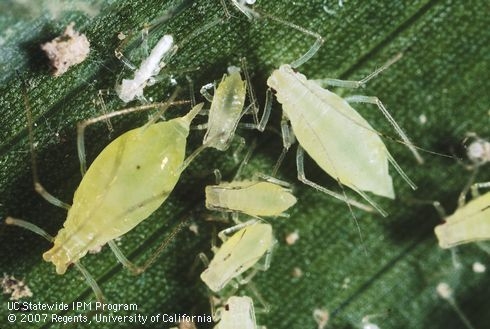
Aphids are small plant-sucking, soft-bodied true bugs. They come in many sizes, shapes and colors (green, black, yellow, brown, and red) and are a common insect in the garden. They attack many vegetable plants, fruit trees, and ornamental vegetation. They are commonly found on roses in the spring. You can usually determine whether aphids are infesting your plants by noting curled, distorted leaves with sticky honeydew on them. Aphids excrete copious amounts of honeydew, rich in sugars. Ants will also be noticeable because they feed on the sweet honeydew. Honeydew encourages growth of sooty mold fungus – a black film on leaf surfaces. Aside from the damage aphids can do to a plant's appearance, aphids can transmit viruses from infected plants to healthy plants. In fact, aphids are the most important vectors of plant viruses, which they carry on their stylets or accumulate in their guts and transmit via their piercing and sucking mouthparts when they feed on young leaves and stems. If the infestation of aphids is low to moderate, they can usually be tolerated. Control aphids by hosing them off with jets of water or use soap solution or oil sprays. Naturally occurring predators such as lady beetles (adults and larvae), soldier beetles, lacewing, and syrphid fly larvae and parasitic wasps, also serve to control aphids. However, the ability of predators and parasites to control them can be thwarted by ants protecting their food source. Therefore, ants need to be excluded from aphid colonies by applying sticky material such as Tanglefoot to the bases of infested plants. Click here to view aphid-eating insects in action. For additional information see: IPM Aphid Pest Note
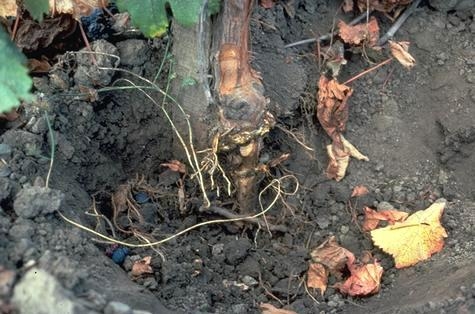
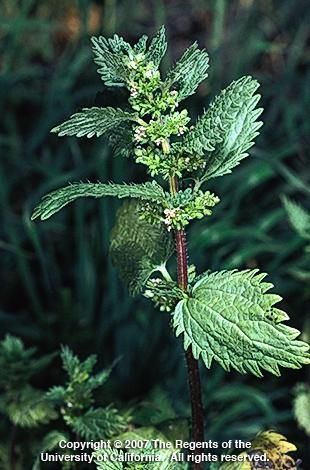
- Author: Kathy Ikeda, Master Gardener
As I pondered a topic for this article, brilliant rays of sunlight penetrated the dark rain clouds, bathing my garden with a beautiful rosy glow. What perfect and timely inspiration.
With respect to gardens, our sun is far more than a “mass of incandescent gas” (a phrase borrowed from the song “Why Does the Sun Shine?” by the group They Might Be Giants); the radiation from our nearby star literally powers the engine of plant growth. Sunlight is the fuel that allows plants to convert water and carbon dioxide gas into glucose—a type of sugar—and oxygen—a vital component of the air we breathe. It's a miracle of nature.
Sunlight and plant health are closely intertwined, so here are some things to consider during your spring planting and gardening chores.
All plants can be categorized by the amount of sun exposure they prefer: full sun (6 hours or more a day), part sun/shade, or full shade (1 hour or less a day). These distinctions are a standard part of nursery plant tags and reputable gardening references such as the Sunset Western Garden Book, for good reason. One of the most important factors for a plant's health is sun exposure.
If a sun-loving plant is planted in an area with too much shade, it won't get the light it needs for optimal health and growth. Conversely, a shade-loving plant will be severely stressed or killed if planted in an area where it receives too much sun.
Not all sunlight is created equal. Morning sunlight is less intense than the hot afternoon sun, particularly during our scorching summers. A plant that receives only two hours of full sun early in the day lives in a far different and milder microclimate than a plant that's exposed to full, intense sunlight at midday or during early afternoon. Sunlight is essential for plant's survival, but there can sometimes be too much of a good thing.
The angle of the sun and the length of daylight hours change constantly throughout the year, and this is an important consideration in garden planning. Yearly changes in sunlight—direct or indirect, long or short periods—can have major consequences for plant health. For example, a spot in the garden that is fully shaded during the winter could get full afternoon sun for many hours in the summertime, and only a plant with wide-ranging tolerances for sun exposure and heat/cold will thrive in such a location. Make sure you understand the year-round conditions—including seasonal sun exposure—of any planting site, and then choose the plants for that location appropriately.
Heat and light are two distinct components of sunlight, and too little or too much of either can harm plants. Symptoms of inadequate sunlight include weak, spindly growth and pale leaves. Some types of damage caused by excessive sun include bud drop, leaf scorch, leaf tip burn, sunburn, sunscald, and wilting. Sunscald is one of the most serious injuries; with too much sun exposure, the bark splits, cracks, and peels away to expose the living plant tissue underneath, which then becomes susceptible to diseases, insect damage, and even death.
Outdoor plants aren't the only ones affected by sun exposure; houseplants are, too. Relatively few plants are naturally adapted to extreme low-light conditions. A typical houseplant placed in a dark corner will eventually start to appear sickly, and might develop long, straggly growth that stretches toward the light from the nearest window. On the other hand, plants placed near a south- or west-facing window might sustain damage from too much heat or direct sunlight exposure in the late spring and summer. Window materials are also a consideration for houseplants. Older windows without UV-blocking coatings allow a wider spectrum of light (and heat) into a home, a condition which more closely mimics outdoor sunlight. On the other hand, modern windows block ultraviolet wavelengths, and plants might need to be grown under a full-spectrum grow light in order to thrive indoors.
The sun is also is factor to consider when pruning plants. If you open up the structure of a tree or shrub by removing many branches, the trunk and remaining branches or stems might suddenly be exposed to strong sunlight since they're no longer shaded by foliage. Monitor the plant to see where the sun hits remaining wood, then prevent sunscald by painting those surfaces with a temporary protective solution made by mixing equal parts water and white, water- based, flat, interior latex paint. Paint only the parts exposed to strong sunlight—upper and southwest-facing surfaces—not those that are shaded. (Do not use “sealing compounds” or tar on branches or pruning cuts; they do more harm than good. Simply prune plants on a dry day with clean tools, and allow the cut surfaces to heal naturally.)
Be sure to keep the sun in mind when planning a vegetable garden or home orchard. Vegetables need at least eight hours of sunlight per day for optimal growth and crop production. Fruit, nut, and citrus trees need six to eight or more hours of sunlight a day in order to be at their healthiest and most productive, and heat is the most important factor in the ripening of citrus fruit.
Some cautionary notes about citrus: the bark of lemon trees is especially susceptible to sunburn, as are the fruits and leaves of Red Ruby grapefruit. These citrus varieties and newly planted citrus trees appreciate some sun protection; loosely wrap their trunks with newspaper during times of peak sun exposure, or use the diluted paint mixture described above to coat the sun-exposed portions of their trunks and main branches.
Sun exposure should also influence your choice of garden mulch. Inorganic mulches such as stone and gravel can be appropriate in shady locations or when placed around heat-loving or desert-type plants. However, rock retains far more heat than organic mulches such as bark, wood chips, or leaf litter. Rock mulch absorbs heat from sunlight during the day and radiates it back to its surroundings throughout the night; this can literally bake plants, scorching their leaves, damaging their bark, and cooking their delicate surface roots. Choose garden mulches wisely, and always keep them several inches away from tree trunks and the bases of shrubs.
May sunshine brighten your days, and may you learn how to effectively manage it in your garden!
- Author: Jamie Davis, Master Gardener
Yep, we're talking about vegetables and fruits and the joy of homegrown food. Read on about vegetarian eating, getting the kids on the veggie train, a bit of food history, and recipes—some tried and deemed true by kids themselves.
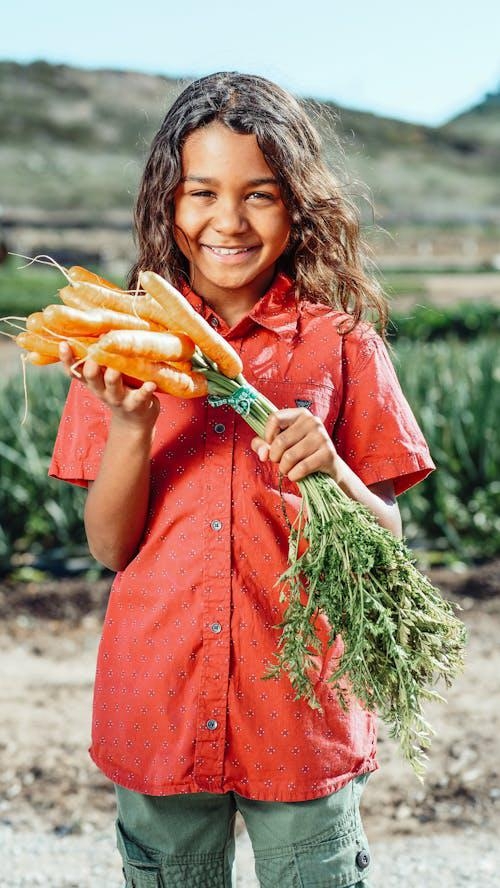
Imagine a little guy, sitting on a small Adirondack chair and smiling with pride at the head of broccoli in his hands. He was involved in the process of growing the broccoli, from digging the garden plot to planting, tending, and harvesting that same broccoli. Now it's easier to offer vegetables for any meal/snack, even breakfast.
It's fun to join that kid for a walk through the garden patch to sample the products. There's nothing like the taste of snacky green beans right off the vine, or oranges and peaches plucked from the tree. Lemons can be turned into refreshing beverages by juicing them and adding healthy water, a bit of sugar or honey, and some mint or lavender.
Children are enticed by the color, texture, scent and “magic” of homegrown vegetables and fruit. Get them involved when they're young and you'll send them into the future with healthy eating habits.
Below are two simple, kid-friendly recipes (both from The Forest Feast for Kids, by Erin Gleason; Abrams Books for Young Readers, 2016):
STRAWBERRY SALSA: Remove the stems of a tomato and two cups of strawberries. Now, chop all, along with a quarter of a red onion and ¼ cup of fresh cilantro. Add the juice from half (or more) of a lime. Mix all the above and add just a pinch of salt. Serve with crackers, or spoon onto a layer of cream cheese slathered on a whole-grain, crusty slice of bread. Heavenly! . . . and easy enough for a child to prepare if there is chopping supervision.
CAPRESE BITES: Stack one yellow or red cherry tomato, one mini mozzarella ball, and one or two basil leaves on a wooden toothpick. Sprinkle lightly with olive oil and salt before serving.
Vegetarian Meals
Like any other menu planning, a vegetarian meal can be as simple or complicated as you wish. Let's talk about the simple:
QUINOA SALAD OR MAIN DISH: Cooking up a batch of quinoa is a matter of rinsing the quinoa with cold water, putting water on to boil, and following package directions for the length of time to cook, usually 15 minutes or so. (Make extra, allow it to cool and put it into a couple of containers to be frozen for another day.) Dry or canned beans, couscous, and lentils may be used instead of or in addition to the quinoa. Add in some raw or partially steamed green beans, broccoli, or asparagus, turn up the flavor with your favorite fresh or dried herbs, or drizzle with some delicious extra virgin olive oil and a splash of vinegar, and voila! You have a great bowl of nutrition to which you may add any number of other ingredients.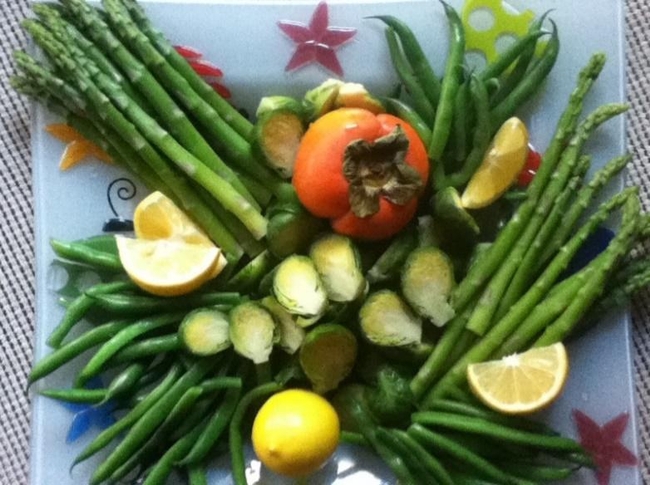
If you can spend time chopping, here is another salad or main dish recipe you might like:
1 cup each finely diced tomato, cucumber, and onion
1 cup each finely chopped parsley and mint
3 Tbsp. each of extra virgin olive oil and fresh lemon juice
Salt and pepper to taste
Gently toss all ingredients together several times. The salad is fresh and delicious, and the quantities may be adjusted to taste.
A recipe that might surprise meat eaters:
PASTA IN EGGPLANT SAUCE
2 Tbsp. olive oil
1 eggplant, cut into 1-inch cubes
½ cup chopped onion
3 cloves garlic, crushed or finely chopped
Chopped fresh parsley
1 pound Roma tomatoes, chopped
1 6-ounce can tomato paste, or same amount made with fresh tomatoes
½ cup (or less) dry red wine
4-8 ounces mushrooms, sliced and sauteed in olive oil
1 teaspoon sugar
½ to 1 teaspoon salt
1 teaspoon or more dried oregano or chopped fresh
1 pound spaghetti or rotini pasta (rotini will hold the sauce better)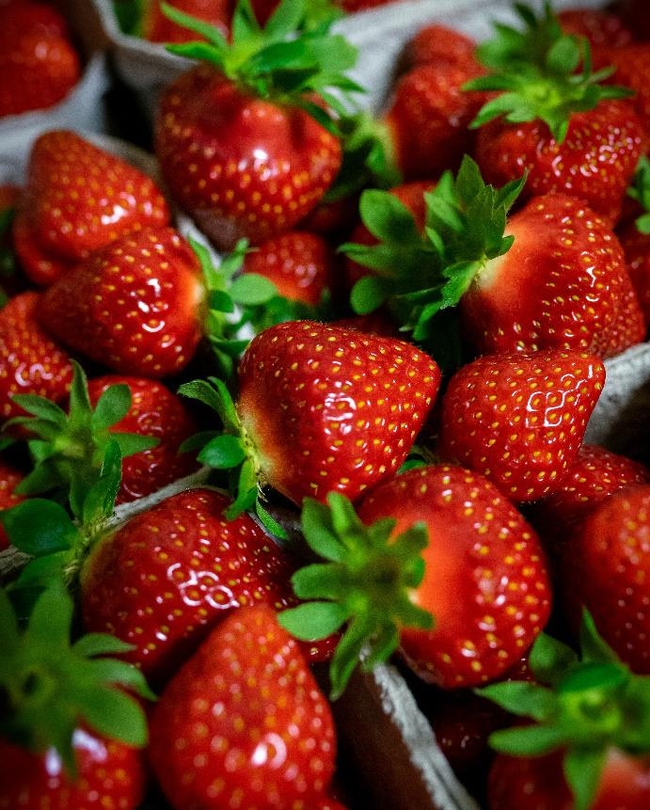
Heat oil in large pan or Dutch oven over medium-high heat. Add eggplant, onion, garlic, and parsley. Stir until tender, approx. 5-6 mins. Stir in tomatoes, paste, wine, mushrooms, oregano, salt, and sugar. Reduce heat, cover, and simmer for 40 minutes or until desired consistency. Serve over cooked pasta, sprinkle with grated parmesan and fresh oregano.
A Bite of Food History
Let's examine some of the history of frozen vegetables and fruits. During the 1800s, experimentation began with the purpose of creating a machine that could produce frigid air. Scientists worked with liquids which would evaporate and draw heat from the surrounding air. Named refrigerants, these liquids were not safe for use in the home. Other factors also played a part. The cooling machinery built to contain the refrigerant was large, complicated, and operated by steam engine. These machines were installed in ships, which cleared the way for meat to be shipped around the world. Research continued and eventually the home refrigerator was a viable appliance in the early 1900s. It took scientists a while longer to perfect the freezer component of the refrigerator, but by the early 1930s, millions of refrigerators were sold in the U.S.
This invention now opened a door to safely freezing foods in massive quantities to be sold to the users of those refrigerators. Inventor Clarence Birdseye created machinery which would fast-freeze edibles. The speed of the freeze prevented the development of large ice crystals. The flavor of the frozen foods was therefore preserved! Birds Eye “frosted foods” hit the U.S. market on March 6, 1930. Ads invited customers to, “Be one of the first persons in the world to try these foods!” And the rest, as they say, is history.
(Credit to The History of Food, by Judith Jango-Cohen; Twenty-First Century Books, 2006)
Wrapping Up with a Tribute to this Author's Birthplace
An easy recipe for SUCCOTASH SALAD, y'all!
3 cups high quality canned or frozen corn
2 cups high quality canned or frozen shelled beans such as butterbeans or baby limas
3 garden-fresh medium tomatoes, skinned, seeded and chopped
½ cup chopped fresh basil
3 or more Tbsp. lime juice
¼ cup extra virgin olive oil
1 teaspoon Dijon mustard
Salt and pepper to taste
Whisk together lime juice, olive oil, and mustard. Season with salt and pepper. Pour dressing over the first four ingredients. Mix, refrigerate, and stir occasionally to meld flavors.
(Credit to The Lee Bros. Southern Cookbook, by Matt Lee & Ted Lee; W.W. Norton & Company, 2006)
Now grab a lawn chair and a mint julep—it's a lazy day!
- Author: Dr. John Giehl, Master Gardener
“Entangled Life:
How Fungi Make Our World, Change Our Minds & Shape Our Futures”
Merlin Sheldrake. New York: Random House, 2022.
The California Master Gardener Handbook (2015) introduces us to fungus in chapter six, which is titled “plant pathology.” It admonishes, “Fungus is the single most important cause of plant disease” (p. 151). 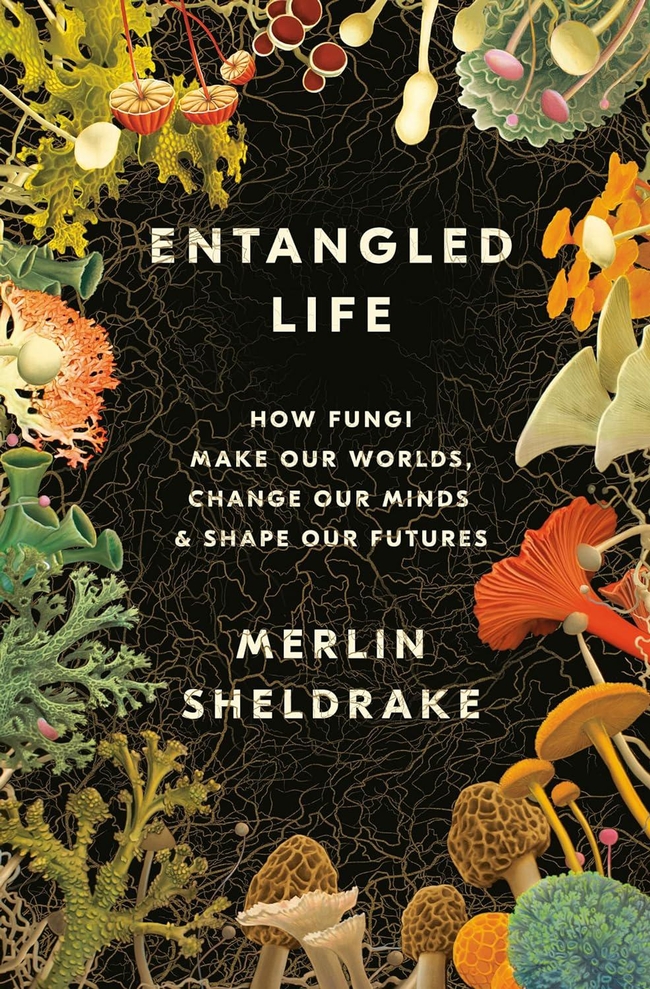
The author of “Entangled Life: How Fungi Make Our Worlds, Change Our Minds & Shape Our Future,” Merlin Sheldrake, holds a doctorate in tropical ecology from Cambridge and did his Smithsonian predoctoral research fellowship in the rain forests of Panama.
The “Entangled Life” is organized around an Introduction: What is It Like to Be A Fungus? followed by a handful of chapters covering information like:
Chapter one—Mycology primer
Chapter two—Mycelium the interconnectedness of reality/life
Chapter three—The intimacy of strangers, fungus plus alga = lichen
Chapter four—Mycelial minds, magic mushroom
Chapter five—Plants + fungus = healthy soil
Chapter six—The Wood Wide Web: subterranean communication, transportation
Chapter seven—Fungus as our environmental savior?
Chapter eight—Yeast = bread v. brew
Who should look at this book (if only for the great photographs)? Mycology hobbyists? Master gardeners? Environmentalists? Or if preparing for Jeopardy, “Entangled Life” should help if the category is astrobiology, e.g,:
Who coined the term “ecology”? Biologist Ernest Haeckel 1866 (p. 71)
Who coined the term “symbiosis” Botanist Albert Frank 1877 (p. 73)
What is the meaning of “entheogen”? A substance that elicits experience of the divine within (p. 94)
What is the definition of “periderm”? Bark (p. 273)
A factoid sampler from “Entangled Life”: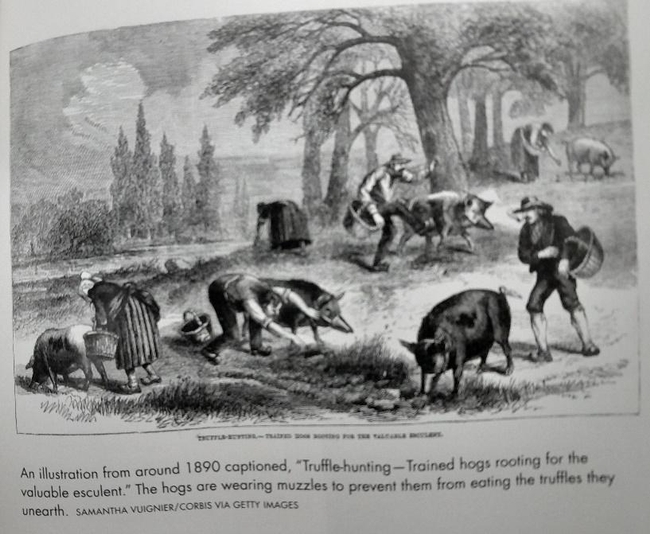
- Fungus is the largest living structure on earth. (p. 4). A fungus found in Michigan covered 180 acres and weighed 44 tons.
- 93% of plants are “mycorrhizal,” that is, dependent on the relationship between fungus and roots.
- Fungus plus alga makes lichen, which is the primer for soil formation. “The most valuable possession on earth is soil fertility” (p. 143).
- Alga manufactures its food by converting sunlight to fuel (photosynthesis), while fungus is an ultimate explorer/scavenger. It lives upon (“eats”) dead decaying matter, and is therefore a “saprophyte.”
- Half of global agriculture is dependent upon pollination.
- Fungus creates antibodies to the varroa mite, which is the main cause of bee colony collapse.
- There are eight (8) times more species of fungus than species of plants (p. 10).
- The relationship between fungus (mykos) and plant roots (rhiza) is a great example of how the ecosystem works (p. 12).
- Mycorrhizal substance is ? to ½ of living soil mass.
- Plants are the evolutionary consequence of the fungus/alga merger (p. 128).
- Fungus extracts nitrogen/phosphorus from soil, delivering it to plants thru roots. Meanwhile, plants deliver sugar/lipids to the fungus. It is a reciprocal, mutually beneficial arrangement (symbiosis).
- Fungus is composed of tubular threadlike structures (hyphae) conveying liquid. Fungus is bundled together in a web-like mesh network (mycelium).
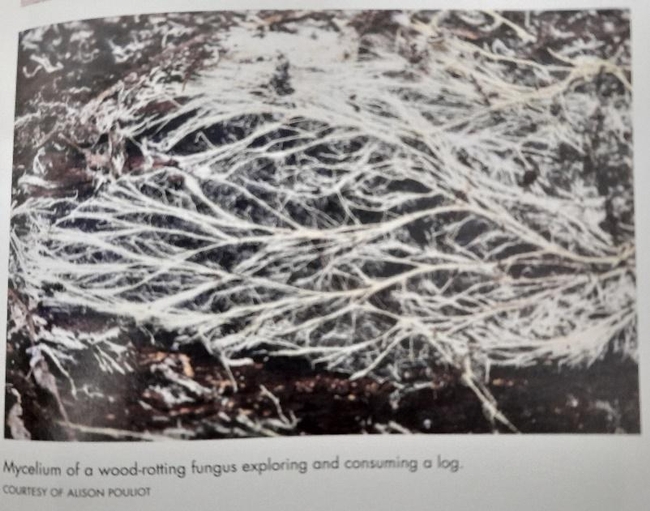
- A malaria vaccine has been extracted from fungus (p. 277).
- Different species of fungus can decompose debris, including dirty diapers (15% of our solid waste reducing its mass by 80%), cigarette butts (the most common litter on the earth, p. 182) and polyurethane (plastic).
Book Quotables:
- “Fungus can save the world”—American mycologist Peter Stamet (p. 183)
- “Life is a process rather than a thing”—John Haldane (p. 243)
- “Everything in nature is hitched to everything else”—John Muir (p. 270)
- “All organisms are connected like a mesh net”—Alex von Humboldt
- “It's impossible to do science without metaphor”—evolutionary biologist Robert Lewontin (p. 211)
- “Life is composition and decomposition” (p. 224).
- “Collaboration is sharing of resources for mutual benefit” (p. 215)
- “Fungus (yeast) is why humans developed from hunter/gatherers to farmers, a cultural transformation from nomad to stationary”—anthropologist Levi Strauss (p. 203)
- “Yeast is key to bread and brew.”
- “60% of the living organisms on earth are its three trillion trees” (p. 177). This invites the sobriquet “wood wide web”?
- Fungus is a great metaphor for life. It keeps changing and moving along. “The you of five years ago is made of different stuff than the you of today” (p. 53).
- Fungus is pretty “intelligent,” especially “If IQ is based upon how efficient one becomes doing what needs be done to survive” (p. 65).
- Fungus bioluminescence or “foxfire” invites insects to visit in the dark, therein helping to spread its spores (p. 49).
- Diversity of assets is a hedge against misfortune. “Fungus in adopting a mycelial network can both branch and fuse as needed” (p. 35). Fungus is capable of turning outward (evolution) and turning inward (involution) in the course of aging (p. 142).
- Collaboration with others may be key to success. Mutual benefit (symbiosis) is derived by merging. Fungus alignment with alga to form lichen creates an opportunity for both photosynthesis and non-photosynthesis survival. Life is both composition and decomposition (p. 224).
- Fungus receives a tiny fraction of the attention given to plants, but it's a valuable survivor that ingests decaying matter (saprophyte), and fungus is a poster child organism for recycling (“mycoremediation”) in the 21st century.
In short, fungus is a mystery that may be “good” or “bad” depending on your outlook. It grows, it spreads, it helps, it destroys. Even though it is often seen and discussed with a pejorative outlook, it might be helping us more than we realize.


